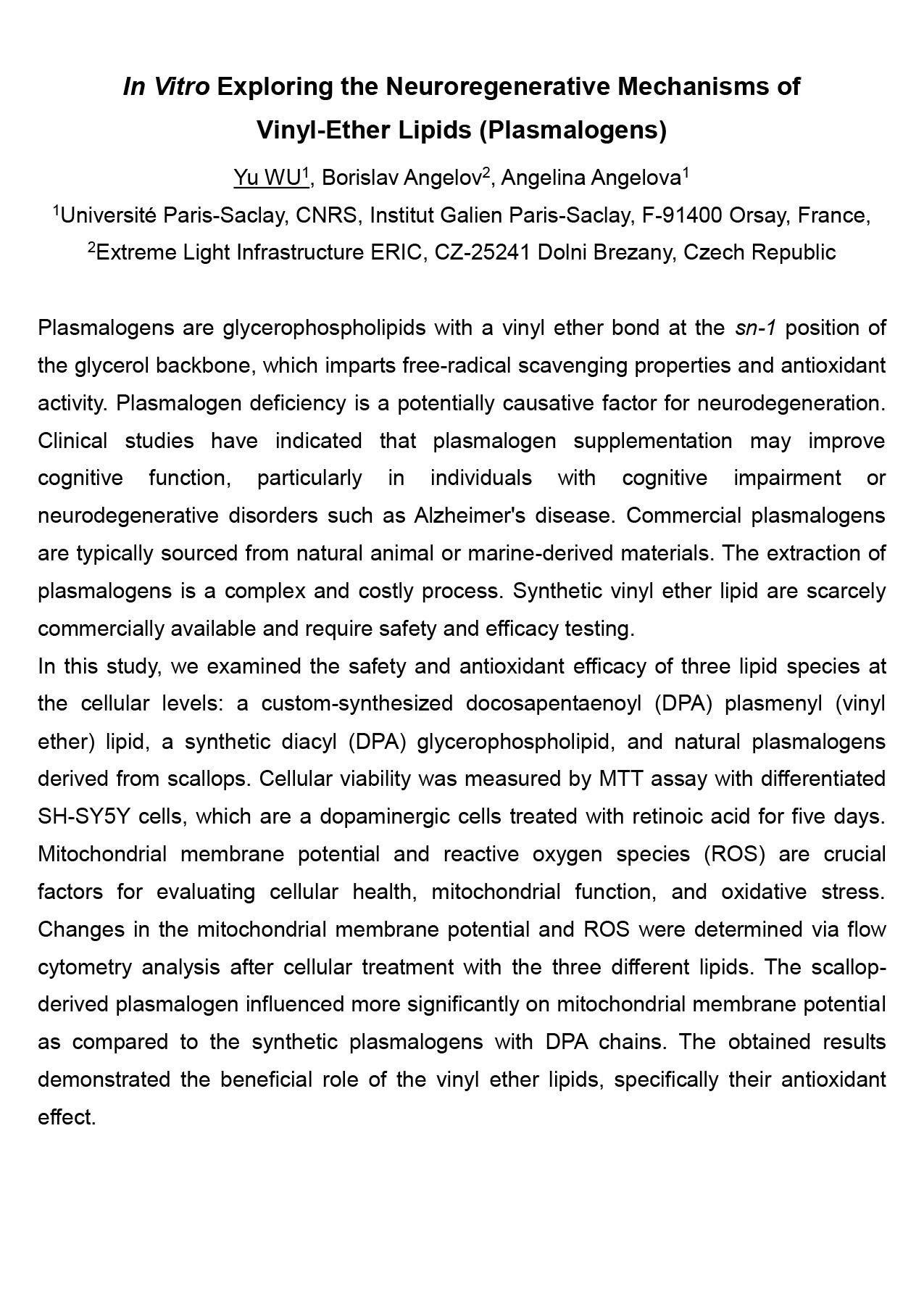Plasmalogens are glycerophospholipids with a vinyl ether bond at the sn-1 position of the glycerol backbone, which imparts free-radical scavenging properties and antioxidant activity. Plasmalogen deficiency is a potentially causative factor for neurodegeneration. Clinical studies have indicated that plasmalogen supplementation may improve cognitive function, particularly in individuals with cognitive impairment or neurodegenerative disorders such as Alzheimer’s disease. Commercial plasmalogens are typically sourced from natural animal or marine-derived materials. The extraction of plasmalogens is a complex and costly process. Synthetic vinyl ether lipid are scarcely commercially available and require safety and efficacy testing. In this study, we examined the safety and antioxidant efficacy of three lipid species at the cellular levels: a custom-synthesized docosapentaenoyl (DPA) plasmenyl (vinyl ether) lipid, a synthetic diacyl (DPA) glycerophospholipid, and natural plasmalogens derived from scallops. Cellular viability was measured by MTT assay with differentiated SH-SY5Y cells, which are a dopaminergic cells treated with retinoic acid for five days. Mitochondrial membrane potential and reactive oxygen species (ROS) are crucial factors for evaluating cellular health, mitochondrial function, and oxidative stress. Changes in the mitochondrial membrane potential and ROS were determined via flow cytometry analysis after cellular treatment with the three different lipids. The scallopderived plasmalogen influenced more significantly on mitochondrial membrane potential as compared to the synthetic plasmalogens with DPA chains. The obtained results demonstrated the beneficial role of the vinyl ether lipids, specifically their antioxidant effect.
